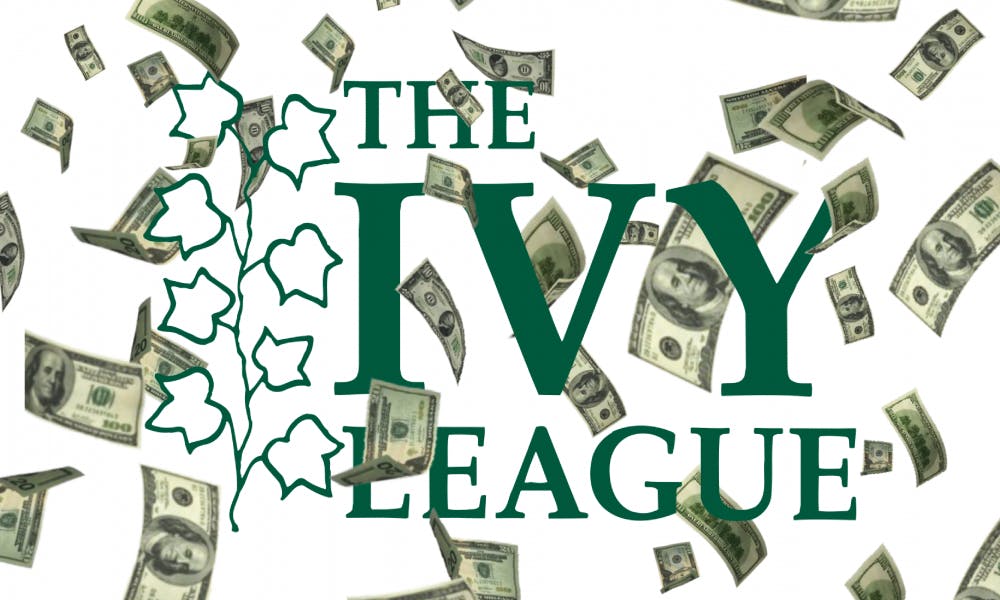
Higher education is a philanthropic cause that pries open the wallets of billionaires. But, that money should go to the institutions that can best serve students, not to those with the most attractive brand names.
Every now and then, the world of higher education falls into a frenzy over the latest mega-donation. In 2015, John Paulson dumped $400 million on Harvard University. The following year, Phil Knight threw the same sum Stanford University’s way. There is intense competition among elite universities to boost the size of their endowments. Likewise, billionaires compete over who can lay claim to the most innovative alma mater, which helps explain the trend towards ostentatiously large gifts.
Following its peers, Wharton received a $50 million gift from the Rowan family in October. Like most other mega-gifts in recent years, Rowan’s donation wasn’t a blank check to fund whatever program Penn wanted. It was allocated toward specific causes like public policy analysis, ensuring that Wharton excels both on Wall Street and in Washington, D.C.
Not everyone is a fan of these donations to elite universities. Canadian journalist Malcolm Gladwell frequently criticizes the American education system for how unequally and ineffectively its resources are apportioned.
Facing the enemy head on, Gladwell visited Penn in 2015 to discuss legitimacy theory — the idea that people will only obey authority when they think that it is acting fairly, consistently, and transparently. Along this line of reasoning, elite universities like Penn alienate Americans because they are contradictory, promoting inclusivity to their donors and applicant pools while overall access to higher education continues to fracture along socio-economic lines.
Gladwell makes a good point. Penn students receive more government funding than their peers at Pennsylvania State University, even while nonprofit institutions like Penn are able to grow their endowments at rapid rates. This growth is enabled because endowments have traditionally been exempt from taxation. In this cycle, growth begets growth, so the impact of a single donation is easily eclipsed by the return from a few years of equity investments.

Public universities are not always more effective at improving social mobility, but they can be. It’s true, Penn ranks higher than Penn State on The New York Times’ College Access Index, a metric evaluating colleges on their commitment to economic diversity. But when it comes to tracking the impact of a single donation, there are other metrics. The Council for Aid to Education recorded the percentage of university donations that gets allocated toward financial aid, and the colleges at the top of the list include Pennsylvania schools like the University of Pittsburgh and Millersville University. Sure, those schools lack glamorous brands. So what?
I was given the opportunity to attend boarding school thanks to the $100 million donation of a generous individual. Mercersburg Academy, a private high school with a student body well under 500 people, recently raised over $300 million from a fundraising campaign. Yes, that’s completely insane for a high school. Many would question — and rightly so — why such a tiny school should amass a fortune while public schools struggle for the funds. At their best, institutions like Mercersburg raise people up, seek out talent from all walks of life, and help students grow both personally and academically. It did that for me.
But at a certain point, an extra few million dollars generates diminishing returns for a limited-capacity institution, especially when it comes to expanding access. After all, Mercersburg can only serve so many students, so they’ll be just fine if the next $100 million goes to a public school.
Gratitude toward one’s alma mater is a wonderful thing. It grounds us throughout our lives to know that there are places to call home — landmarks of our growth into adulthood. I know that wherever I go after college, I will be tied to the memories from my time at Penn, just like I am tied to Mercersburg. But the opportunities that I was given shouldn’t be exceptional. They shouldn’t be a special case. Donors to universities should expand access to education, not exacerbate the imbalance between institutions.
What’s more, I am not arguing against making personal contributions to Penn, such as interviewing applicants or volunteering at alumni events. I am speaking to those with dreams of making the next grand gesture, those with the power to shift the disastrous imbalance in the American education system.
In our approach to large-scale, targeted giving, let’s be smart. Right now, Americans demand affordable, practical, and readily accessible higher education. Forget about branding and donate to the colleges that can make that happen.

JULIA MITCHELL is a College and Wharton freshman from Yardley, Pa. studying international relations. Her email address is jcmitch@wharton.upenn.edu.
The Daily Pennsylvanian is an independent, student-run newspaper. Please consider making a donation to support the coverage that shapes the University. Your generosity ensures a future of strong journalism at Penn.
Donate






